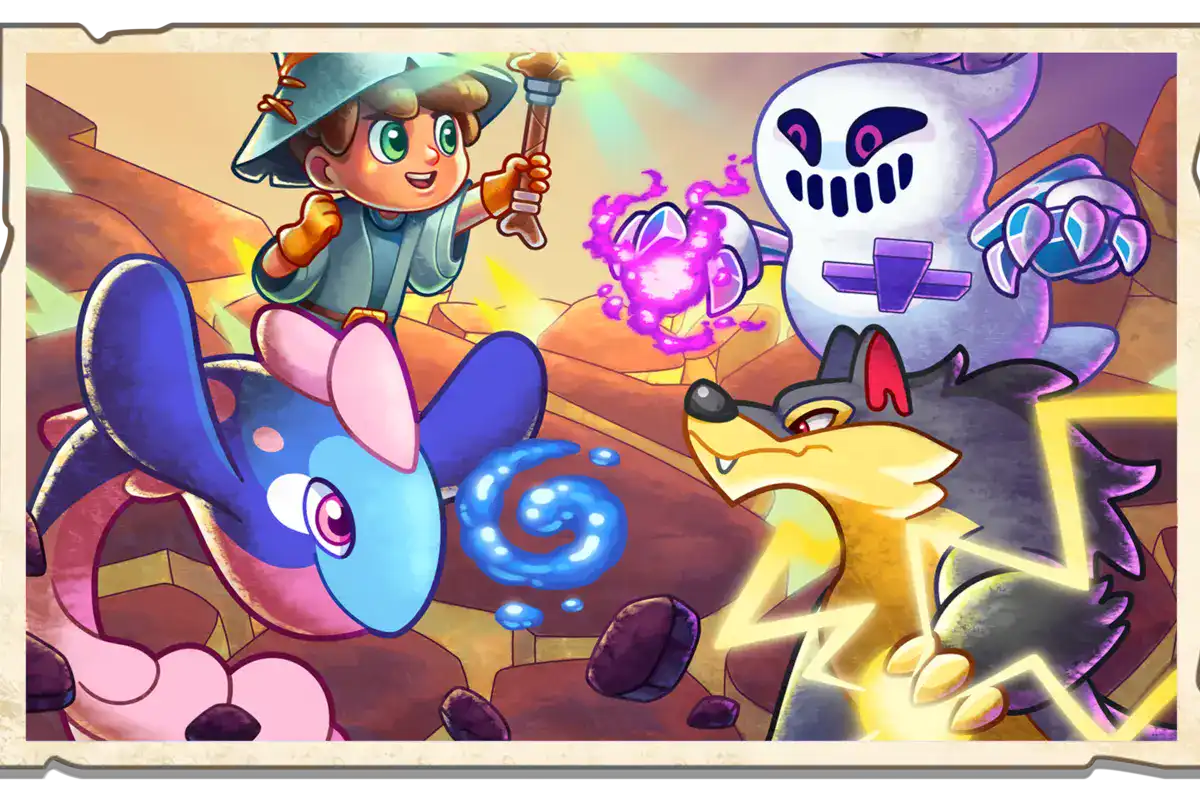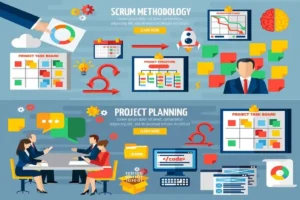Codecraft: Agile Strategies for Crafting Exemplary Software
The art and science of creating high-quality software are rooted in a unique combination of skill, adaptability, and disciplined practices. In a world driven by rapid technological changes, Codecraft emerges as the methodology for those who seek not only functionality but excellence. By integrating Agile principles with the precision of craftsmanship, developers can build software that is resilient, efficient, and aligned with user needs. This article dives into agile strategies that embody Codecraft and the tools and mindsets necessary to craft exemplary software.
1. Understanding Codecraft in Modern Software Development
In software engineering, Codecraft is the pursuit of creating high-quality code that is efficient, maintainable, and adaptable. Rather than focusing solely on the speed of delivery, Codecraft champions the quality of every piece of software, making Agile methodologies a perfect match. Agile’s iterative and collaborative approach provides a foundation, while Codecraft’s principles aim to polish each deliverable into a refined product.

2. The Fusion of Agile Principles with Software Craftsmanship
Agile methodologies prioritize quick, incremental progress and iterative adjustments, which align naturally with the values of Codecraft. Agile’s focus on collaboration, testing, and customer feedback creates an environment where code quality is a shared responsibility and every sprint is a step towards a polished product. The following core Agile principles serve as pillars of Codecraft:
- Iterative Development: Agile sprints offer a structured rhythm where developers refine their code incrementally. Rather than delivering a monolithic final product, this iterative approach ensures every cycle enhances the code’s functionality and design.
- Collaboration and Communication: Effective teamwork is the cornerstone of successful software projects. Codecraft encourages close collaboration through pair programming, where developers review each other’s work in real-time. Code reviews and regular discussions foster an environment of continuous improvement.
- Continuous Integration and Continuous Delivery (CI/CD): CI/CD practices empower teams to integrate and test their work frequently, reducing risks and preventing bottlenecks. With CI/CD, developers can deliver stable, functional code to users with each sprint, gathering feedback and making necessary adjustments in real time.
- Customer-Centric Development: Agile development emphasizes involving customers early and continuously. Regular feedback allows developers to ensure that the final product aligns with user needs and expectations. Agile craftspeople view feedback as fuel for improvement, refining features and performance based on customer insights.
3. Agile Strategies for High-Quality Code
Agile strategies, combined with craftsmanship principles, provide a roadmap to crafting software that isn’t just functional but remarkable. Here are key strategies that developers can employ:
a. Refactoring: Continuous Improvement of Code
Refactoring is the process of restructuring existing code without changing its functionality. Agile promotes refactoring as a way to ensure code remains clean and easy to maintain. Skilled craftspeople use refactoring to eliminate redundant code, streamline algorithms, and make the codebase more intuitive for future developers. Regular refactoring prevents technical debt and lays the groundwork for a sustainable codebase.

b. Test-Driven Development (TDD): Ensuring Reliability from the Start
TDD is a coding practice where developers write tests before the actual code. In TDD, developers create a test case that defines the desired functionality and then write just enough code to pass the test. This approach keeps the code focused, minimal, and functional. Agile teams that adopt TDD produce robust, reliable software with fewer bugs, as testing is ingrained in the development process.
c. Behavior-Driven Development (BDD): Focusing on End-User Experience
BDD extends TDD by emphasizing behaviors and outcomes that matter to end-users. By writing tests based on user stories and expected behaviors, developers can focus on functionality that adds value to the user experience. This approach aligns code outcomes with customer needs, ensuring that each feature resonates with real-world expectations.
4. Agile Tools for Software Craftsmanship
Several tools help developers streamline their Agile craftsmanship, from version control to automated testing:
- Git and Version Control Systems: Version control ensures that every code iteration is recorded and reversible, allowing teams to manage code changes and collaborate seamlessly.
- Automated Testing Frameworks: Tools like JUnit for Java and Mocha for JavaScript enable developers to automate tests and validate code quality frequently. Automation ensures code reliability and helps catch issues early in the development cycle.
- CI/CD Platforms (e.g., Jenkins, GitLab CI): These platforms support continuous integration and delivery, automating testing and deployment processes to ensure smooth, stable releases. CI/CD tools encourage fast, incremental changes that align with Agile’s iterative approach.
5. Building a Craftsmanship Mindset: Key Qualities for Exemplary Software
Codecraft is more than a set of practices—it’s a mindset. Developers who embrace craftsmanship in an Agile framework cultivate qualities like attention to detail, commitment to learning, and resilience. They view every line of code as part of a larger system, taking pride in both functionality and elegance. Agile craftspeople understand that exemplary software results from skill, diligence, and adaptability.
6. Adopting a Codecraft Culture in Teams
For Agile teams, fostering a Codecraft culture requires intentionality. Leaders can set the tone by:
- Promoting Knowledge Sharing: Encourage practices like pair programming and regular code reviews. Teams that openly share knowledge develop a collective skill set, enabling them to create consistently high-quality code.
- Supporting Ongoing Education: Encourage team members to pursue learning opportunities, from workshops to industry conferences. Continuous learning keeps developers adaptable and aligned with best practices.
- Fostering Autonomy and Accountability: Agile teams operate best when members have the autonomy to make decisions and the responsibility to ensure quality. A craftsmanship culture empowers developers to take ownership of their work, balancing speed with precision.
7. The Role of Documentation in Agile Codecraft
While Agile discourages excessive documentation, good documentation remains essential. For craftsmanship-oriented teams, documentation should be concise and purposeful, focusing on code functionality, dependencies, and decisions. By documenting code thoughtfully, teams create a resource for future developers, reducing onboarding time and maintaining consistency across projects.

8. Navigating Challenges in Agile Codecraft
Combining Agile and Codecraft is not without challenges. Teams may struggle with balancing speed and quality, especially under tight deadlines. Here’s how Agile teams can address common obstacles:
- Balancing Quality with Speed: While Agile favors quick iterations, Codecraft emphasizes quality. Teams can address this by dedicating specific sprints to refactoring and testing, ensuring quality without sacrificing delivery speed.codecraft: agile strategies for crafting exemplary software
- Handling Technical Debt: Technical debt is inevitable but manageable. By prioritizing code quality and adopting a proactive approach to refactoring, teams can reduce technical debt and maintain code integrity.
- Dealing with Changing Requirements: Agile’s iterative approach handles changing requirements well, but craftsmanship adds a layer of complexity. By regularly refactoring and involving customers throughout development, teams can accommodate changes without compromising quality.
9. Examples of Codecraft in Action
Some real-world examples illustrate how Agile teams apply Codecraft to create exemplary software:
- Spotify: Known for its agile engineering culture, Spotify uses autonomous squads to develop and test features iteratively. This model allows rapid development while maintaining a high standard of code quality.
- Google: Google’s commitment to TDD and code review ensures that code quality remains high, even in a fast-paced, ever-evolving environment.
- Netflix: Embracing CI/CD and automated testing, Netflix delivers continuous improvements without sacrificing user experience or software quality.
Conclusion: The Path Forward with Codecraft and Agile
For software developers, Codecraft offers a path to creating exceptional software by integrating Agile’s flexibility with a craftsman’s eye for detail. As the industry evolves, the emphasis on quality and user-centric development will only grow, making Codecraft an indispensable approach to building resilient, impactful software. By embracing agile strategies and a craftsmanship mindset, developers can deliver not just functional software, but exemplary software that stands the test of time. See More New Trend Blogs














